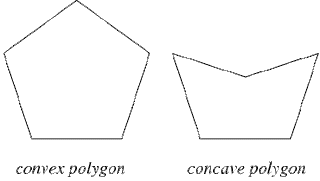To define reflex angle, let us look at the following figures:
What is it that is different about these angles? Or in other words, what do we notice about these angles? Note that the measures of all the angles are greater than 180 degrees. Based on this understanding we now define reflex-angles as follows: An angle whose measure is more than 180 degrees and less than 360 degrees is called a reflex angle. Mathematically that can be written like this: If an angle measure α is such that, 180 < α < 360 degrees, then α would be a reflex-angle measure.
Now that we know what a reflex-angle is, the next most obvious question would be how can a reflex-angle be measured? Considering the fact that normally we use a set square or a protractor to measure angles, we know that the maximum angle that can be measured using a protractor or a set square is 180 degrees. So how can we measure reflex-angles?
How to measure a reflex angle?
Every normal angle, which is not a reflex-angle, has its corresponding reflex-angle. Whether an angle is acute or obtuse, it would always have its corresponding reflex-angle. This can be seen in the examples below:
Example 1:
Here the acute angle is 49 degrees and the corresponding reflex-angle is 311 degrees. The sum of these two angles is 49 + 311 = 360 degrees.
Example 2:
Here we have an obtuse angle measuring 112 degrees and its corresponding reflex-angle measuring 248 degrees. The sum of these two angles is 112 + 248 = 360 degrees.
Therefore based on the definition of reflex angle, we can state that the sum of an angle and its corresponding reflex-angle is always 360 degrees. Thus if we want to measure a reflex-angle, we follow the following steps:
1. First we measure the corresponding acute or obtuse angle (say 112 degrees or 49 degrees in the above figures) = α degrees.
2. Now subtract the angle thus measured from 360 degrees. Thus our reflex-angle
= r = 360 - α degrees.
Where do we find reflex angles?
Reflex-angles are usually found in concave polygons.
A concave polygon would have at least one reflex-angle. Other examples of concave polygons are shown below:
Here we have a concave quadrilateral, a concave pentagon and a concave heptagon.















